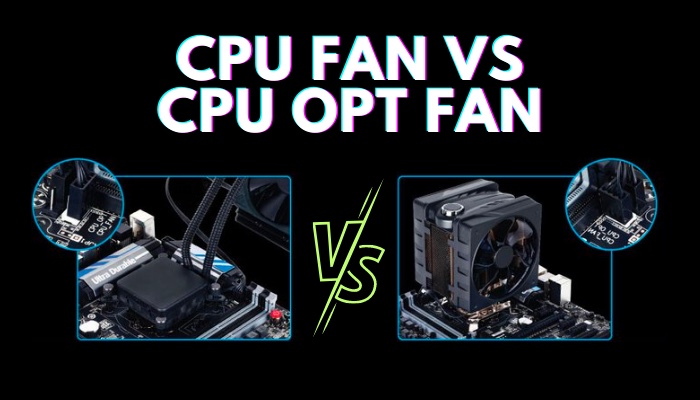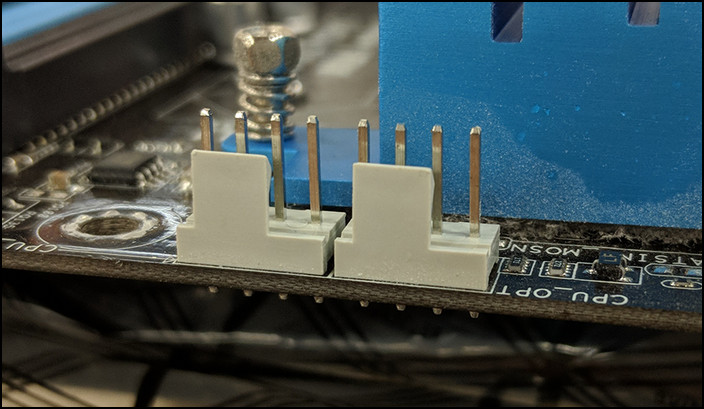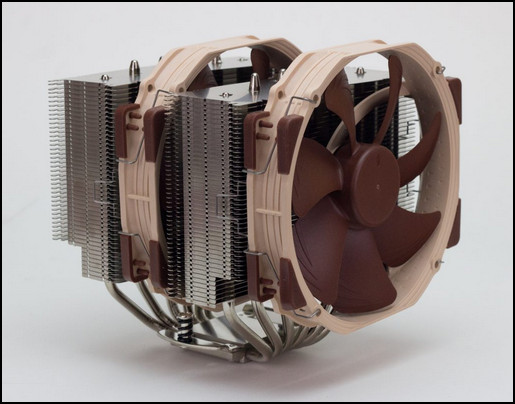When building a PC, connecting the front headers and fans to the motherboard can be stressful. To aggravate this situation even more, some motherboards include two different headers to connect your CPU fans, which simply adds up the confusion.
The good thing is you can go with either CPU FAN or OPT FAN header. And to simplify building the PC for you, I will cover all the different fan headers on your motherboard in this article.
So, let’s get started.
What is CPU FAN and OPT FAN?
The CPU_FAN is the primary fan header for your CPU cooler. If you use an air-based cooler, this is where you need to connect the CPU fans. The headers provide the BIOS with the information that a cooler is connected. Once that is detected, the PC can fully power on.
For your reference, this is what the headers would look like on your motherboard.

But if you use liquid cooling, be it an AIO cooler or custom loop, you will have multiple fans. How to connect all these fans then?
That’s when the OPT_FAN comes into use. Some people also call it the optional header. You can connect the AIO pump to this header. The rest of the cooler fans can then connect to the CPU FAN header.
The benefit of this header is that you can connect your main CPU fan to it without running into a BIOS warning. This happens frequently with ASUS motherboards where the BIOS does not allow you to boot to Windows if you do not connect the CPU fan to the primary header.
While essentially the same thing, the CPU and case fans are quite different. Check our separate article where we discuss these differences and how to properly use one. However, you can still replace the CPU fan with a case fan.
What are the Different Fan Headers on your Motherboard?
Apart from the aforementioned fan headers, there are additional ones present. These are mainly used for connecting your case fans. If the headers have 4 pins they are PWM enabled, which means you can control the fan’s speed. The 3 pins fan headers are DC controlled and come with fixed fan speed as configured.
Now let’s look at all the fan headers that you get.
| Fan Header | What you can connect |
|---|---|
| SYS_FAN | Case Fans, front radiator |
| CHA_FAN | Same as before |
| AIO_PUMP | AIO pump |
| CPU_FAN | Connect CPU Cooler, AIO fan |
| CPU_OPT | AIO Pump, AIO fan |
Functionality wise the system and chassis fan headers do the same thing. The naming scheme varies from one motherboard to the other. If you connect your fans to either of them you will be fine.
Want to know if your CPU cooler is working properly? Do not forget to check our guide where we list multiple ways you can run this check.
When to use CPU FAN vs OPT FAN?
Let’s answer this question by considering the type of CPU cooler that you use.
Scenario 1: If you have a CPU cooler that comes with a single fan, connect it to the CPU FAN header. Sometimes your cooler may employ the dual fan design such as the Noctua D15. In that case, use a splitter to join them into a single connector and then connect it to the same CPU fan header.
Scenario 2: If you use an AIO or a custom loop water cooling solution, there are two headers now. One to power the pump and the other to the radiator fan. Furthermore, you can have up to three CPU cooler fans connected to the radiator. So, four headers in total.
In this case, connect the AIO pump to the CPU OPT. Connect all the radiator fans to the same fan splitter and then connect it to the CPU FAN header. This will give you the ability to manually control the fan’s speed using the motherboard or any third-party software.
Frequently Asked Questions
Can I put a case fan on CPU OPT?
Yes, you can plug in a case fan to the CPU OPT header if it is unused. But it is recommended to plug in the case fans to their dedicated headers instead.
How to control CPU OPT fan speed?
To control a fan connected to the CPU OPT header, first ensure it has PWM(comes with a 4-pin header). Next, go to the BIOS and open up the manufacturer-specific software such as Q Fan for ASUS motherboards. Here you can change the fan curve and its speeds.
Can I plug a 3-pin fan into a 4-pin?
You can actually plug a 3-pin fan into a 4-pin. But in this way, you will lose the PWM functionality. You will no longer be able to control the fan’s speed using software such as Speed Fan. The fan will then run in DC mode at 100% speed all the time.
In Conclusion
The optional CPU header makes it convenient to connect your CPU radiator fans. If you have multiple fans present (such as an AIO unit), then this header comes in great use. Otherwise, the vanilla CPU fan header is perfectly fine for you.
This should solve your dilemma regarding the fan headers. So go ahead and install the cooler. And get the PC ready for some feel-good gaming sessions.
Happy Gaming!




